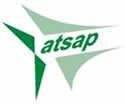Wed, Apr 07, 2010
FAA Program Allows Immunity For ATC Employees Who Report Safety
Lapses
 A program instituted 18 months ago by the FAA has reportedly
revealed a high number of air traffic errors that might have
previously gone unreported. The Air Traffic Safety Action Program
(ATSAP) was instituted by the FAA to allow air traffic controllers
to point out safety lapses with a guarantee of immunity as whistle
blowers.
A program instituted 18 months ago by the FAA has reportedly
revealed a high number of air traffic errors that might have
previously gone unreported. The Air Traffic Safety Action Program
(ATSAP) was instituted by the FAA to allow air traffic controllers
to point out safety lapses with a guarantee of immunity as whistle
blowers.
According to a report in USA Today, more than 14,000 incidents
have been submitted to the automated, online system since the
program began.
The weekly report for March 29th, the most recent available
online, shows that 5,711 of the 6,372 controllers registered to use
the system have made at least one report of a perceived safety
issue since the program began. The report indicates there are
14,867 FAA employees who are eligible to register to participate in
the reporting program.
Most of the incidents reported the week of March 29th were for
Loss of Separation between aircraft, followed by the category
"Unsafe Situation."
 The monthly reports break down the data further, analyzing
reported events by facility type, top contributing factors, and
other criteria. The monthly documents also highlight some specific
issues and offer solutions. For instance, in once case an En Route
controller cleared an aircraft to descend to 2500 feet which s/he
believed was the Minimum Safe Altitude (MSA) for the particular
area. The Minimum Safe Altitude Warning (MSAW) alerted at 2900
feet. The overhead charts depicted 2500 feet as the MSA. The
controller was not aware that the MSA had been raised to 2900 feet
a week earlier. As a result, the ERC (Event Review Committee)
communicated the issue and the charts were updated accordingly.
The monthly reports break down the data further, analyzing
reported events by facility type, top contributing factors, and
other criteria. The monthly documents also highlight some specific
issues and offer solutions. For instance, in once case an En Route
controller cleared an aircraft to descend to 2500 feet which s/he
believed was the Minimum Safe Altitude (MSA) for the particular
area. The Minimum Safe Altitude Warning (MSAW) alerted at 2900
feet. The overhead charts depicted 2500 feet as the MSA. The
controller was not aware that the MSA had been raised to 2900 feet
a week earlier. As a result, the ERC (Event Review Committee)
communicated the issue and the charts were updated accordingly.
"This is a way for us to get new sets of eyes and ears in a lot
of places," FAA Administrator Randy Babbitt told USA Today. "I
think everybody agrees there will be a safer system in the long
run."
There has been some controversy associated with the program.
Some question the advisability of granting immunity to controllers
who make serious errors. But FAA officials say the trade off is
greater knowledge about risks, and NATCA safety chairman Steven
Hansen says the union membership has been quick to embrace the
system.
More News
Aero Linx: Model Aeronautical Association of Australia MAAA clubs are about fun flying, camaraderie and community. For over 75 years, the MAAA has been Australia’s largest fl>[...]
Touchdown Zone Lighting Two rows of transverse light bars located symmetrically about the runway centerline normally at 100 foot intervals. The basic system extends 3,000 feet alon>[...]
“Discovery and innovation are central to our mission at Virgin Galactic. We’re excited to build on our successful record of facilitating scientific experiments in subor>[...]
How To Get A Story On Aero-TV News/Feature Programming How do I submit a story idea or lead to Aero-TV? If you would like to submit a story idea or lead, please contact Jim Campbel>[...]
Student Pilot Reported That During Rotation, “All Of A Sudden The Back Of The Plane Kicked To The Right..." Analysis: The student pilot reported that during rotation, “>[...]
 ANN's Daily Aero-Linx (05.02.24)
ANN's Daily Aero-Linx (05.02.24) ANN's Daily Aero-Term (05.02.24): Touchdown Zone Lighting
ANN's Daily Aero-Term (05.02.24): Touchdown Zone Lighting Aero-News: Quote of the Day (05.02.24)
Aero-News: Quote of the Day (05.02.24) ANN FAQ: Contributing To Aero-TV
ANN FAQ: Contributing To Aero-TV NTSB Final Report: Cirrus Design Corp SR20
NTSB Final Report: Cirrus Design Corp SR20




